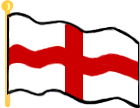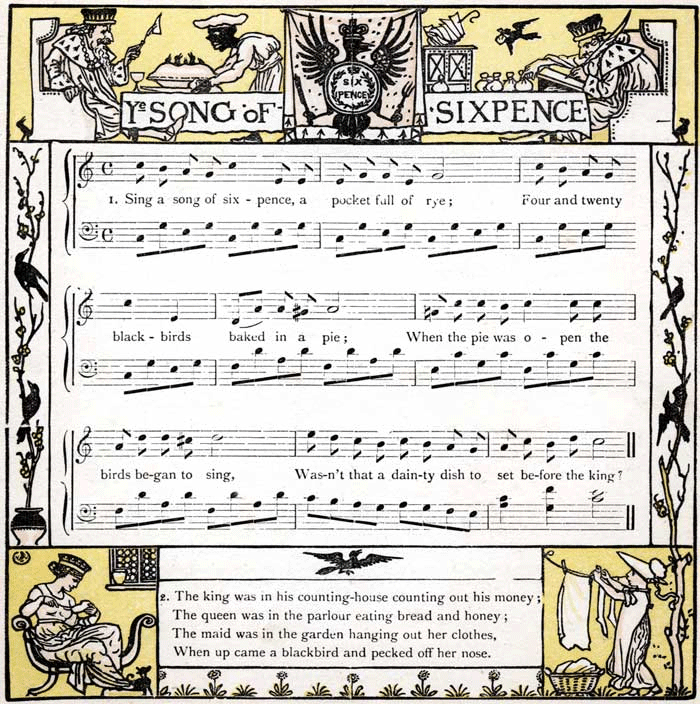Sing a Song of Sixpence
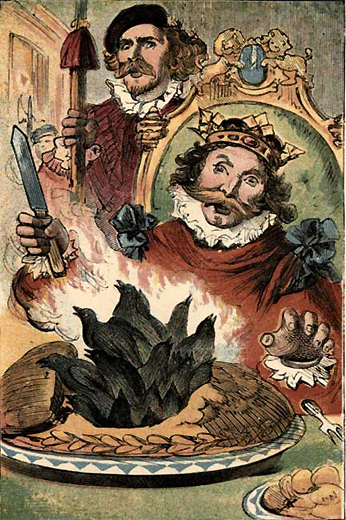
Sing a Song of Sixpence
Chantez une chanson de quatre sous
Chanson enfantine
Chanson enfantine
(Anglais)
(Français)
Sing a song of sixpence,
A pocket full of rye*;
Four-and-twenty blackbirds
Baked in a pie.
When the pie was opened
The birds began to sing.
Was not that a dainty dish
To set before the king?
The king was in his counting-house,
Counting out his money;
The queen was in the parlour,
Eating bread and honey.
The maid was in the garden,
Hanging out the clothes;
'Long came a blackbird
And snapt off her nose.
But there came a Jenny Wren
And popped it on again.**
Chantez une chanson de quatre sous,
Une pleine poche de seigle,
Vingt-quatre merles
Cuits dans une tourte.
Quand on ouvrit la tourte,
Les oiseaux se mirent à chanter.
N'était-ce pas un plat délicat
À servir au roi ?
Le roi était dans sa salle du trésor,
Comptant son argent,
La reine était dans le parloir
Mangeant du pain et du miel.
La bonne était dans le jardin
Étendant le linge ;
Un merle arriva
Et d'un coup de bec, le nez lui enleva.
Mais arriva un roitelet
Qui d'un seul coup le lui recolla.**
Notes
* Plus anciennement, c'était : "A bag full of rye" (un sac plein de seigle).
** On peut trouver ce dernier petit couplet dans la version de Randolph Caldecott, 1880. Toutes les versions ne l'incluent pas. (Il fallait juste que je présente une fin heureuse ici pour les enfants ! –Mama Lisa)
*****
Voici la version de Sing a Song of Sixpence issue de The Only True Mother Goose Melodies (Publié et déposé à Boston en 1833 par Munroe & Francis):
Sing a song of sixpence, a bag full of rye,
Four and twenty blackbirds baked in a pie:
When the pie was opened, the birds began to sing;
And wasn't this a dainty dish to set before the king?
The king was in the parlour, counting out his money;
The queen was in the kitchen, eating bread and honey;
The maid was in the garden, hanging out the clothes,
There came a little blackbird and nipt off her nose.
La traduction en français est la même que plus haut sauf la dernière ligne : "Arriva un petit merle qui emporta son nez".
Voilà l'illustration qui allait avec :
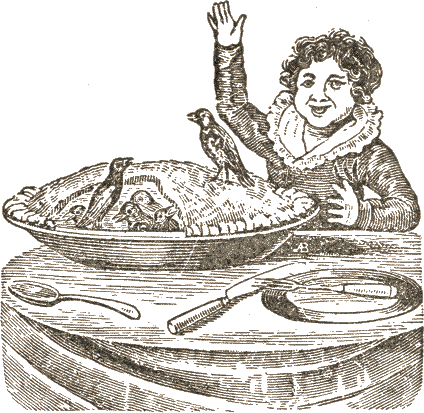
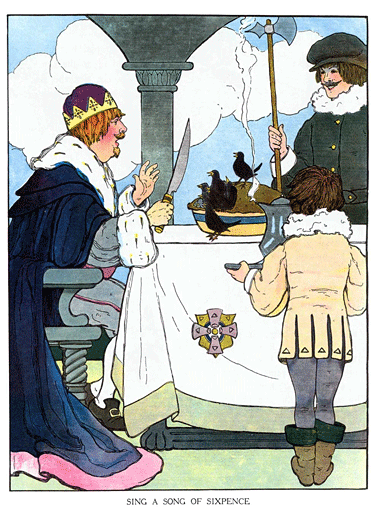
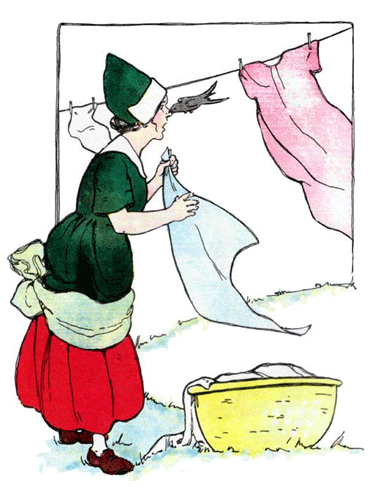

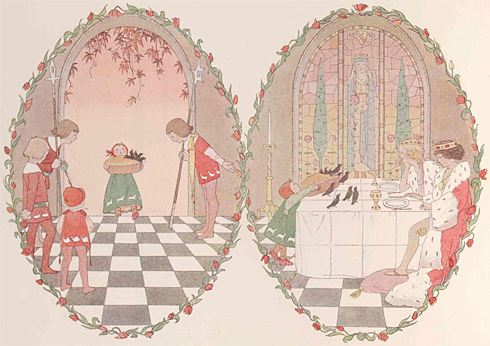
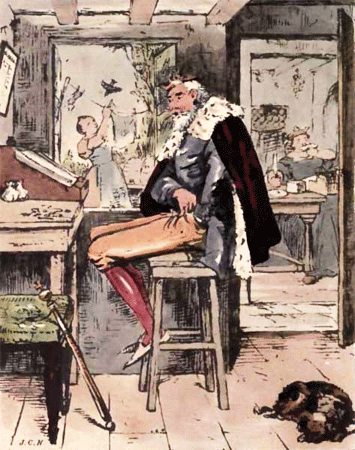

Le deuxième MP3 est interprété par 17 talentueuses étudiantes en musique au niveau universitaire qui étaient sœurs dans le Sigma Alpha Iota International Music Fraternity for Women à la State University-Stanislaus de Californie en 2007. La partition musicale qui a servi de base à l'enregistrement provient de Our Old Nursery Rhymes (1911) sélectionnés par Alfred Moffat. Le troisième enregistrement est chanté par Liberty Stump pour Librivox.
Remerciements
La première illustration provient de The National Nursery Book. Les deuxième et troisième illustrations proviennent de The Real Mother Goose (1916), illustré par Blanche Fisher Wright. La quatrième illustration est de The Little Mother Goose (1912), illustré par Jessie Willcox Smith. La partition et la musique proviennent de The Baby's Opera de Walter Crane. La cinquième image provient de Traditional Nursery Songs of England with Pictures by Eminent Modern Artists édité par Felix Summerly (1843). La sixième illustration est de H. Willebeck Le Mair issue de Our Old Nursery Rhymes (1911), arrangé par Alfred Moffat.


